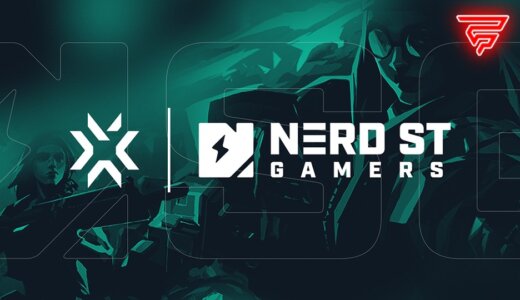Gaming on a Mac is not exactly ideal, but you probably knew as much. If you’re reading this piece, it’s probably out of necessity rather than sheer masochism. You can game on a Mac, but that doesn’t mean you should. There’s really no other way to put it. If you’re really serious about gaming, then you’d be wise to avoid this alluring operating system entirely — it’s just not built with gaming in mind.
Still, there’s a surprising number of people around the globe who rely on their Mac-running machines and just want to game a bit on the side. They’re not necessarily looking to fire up Cyberpunk 2077 — something a lot more modest will suffice. In that case, believe it or not, the situation becomes considerably more complicated because some light gaming on the side is possible, although compatibility and performance definitely leave a lot to be desired.
In other words, you might get the game you want to run on your Mac device, but it might not run as well as you want it to — or as well as it needs to in order to ensure an enjoyable gaming experience. That’s sort of been the leitmotif with gaming on a Mac: good (at best), but as far from great as possible.
BootCamp — A Thing of the Past (Unfortunately)
For the longest time (in the post-PowerPC era), all Macbooks were equipped with nothing but Intel processors and integrated graphics cards (either of the UHD or Iris variety). These, of course, were impossible to game on. Then came Apple’s deal with AMD, and all of a sudden you could purchase a surprisingly beefy Macbook Pro — one that was equipped with a surprisingly potent GPU. By the end of the Intel era, you could spec out your Macbook with up to an AMD Radeon Pro 5600M with 8GB of HBM2 memory and a scorching hot 8-core i9 with a Turbo Boost of up to 4.8Ghz — a number it could seldom sustain.
In that sort of situation, BootCamp (a built-in utility for installing Windows and running a dual boot set-up) definitely came in handy. You could put your potent hardware to use and game much like you would on a regular Windows laptop, without a huge performance drop-off.
Then came 2020 — a year that changed not only the world but Apple as well. It marked their third (and most impressive) architecture shift; for the first time ever, Apple began using its own silicon. They promised mind-blowing performance and, frankly, they delivered. It wasn’t a bunch of marketing hogwash, but rather a foretaste of the future — and we were immediately hooked.
Gaming, however, took a backseat (to say the least). If gaming on a Mac was ill-advised in the past, now it became an endeavor that was nearly impossible to pull off.

Timeless design, as always.
The M1 Era
Before we delve deeper into benchmark territory, we need to first talk a bit about Apple’s ARM-based SoC — the M1. It’s packing either an 7 or an 8-core GPU. That, on paper, means nothing. In actuality, it’s nearly as powerful as an NVIDIA GTX 1650 Ti. Stat-wise, that’s incredibly impressive, but you wouldn’t be able to tell based on its gaming performance.
The biggest problem is support (it always has been with Apple). M1-optimized software runs like a dream; anything that’s x64/x86 will run at near-native speed, but it really depends on the developer and a slew of other factors, most of which aren’t in your control.
The biggest developers in the world are only now adapting their software to Apple’s M1, which means games aren’t exactly a top priority. Heck, we’re putting it mildly here! So what are your options?
Gaming on a Mac — 2021 Edition
BootCamp is no longer available, which means that sideloading Windows simply isn’t an option (other than running it in a virtual machine). So, you either have to find games that have been ported or run them through Rosetta 2 (i.e. emulate them). The former is great as it will provide you with the absolute best performance, but the list of supported titles is meager at best. The latter is great because you can run all kinds of games, but — depending on the title — performance probably won’t be all that great.
The integrated GPU inside Apple’s M1 is surprisingly powerful, but if it has to run games through an emulation layer then a good chunk of its power gets lost right from the very get-go. Still, you can run triple A games that are a bit old as you’ll have more than enough power to reach acceptable frame rates.
You can check out a very solid benchmark video down below, courtesy of YouTuber MrMacRight.
Ori and the Blind Forest (emulation through Parallels), Path of Exile (Rosetta 2), Metro Exodus (Rosetta 2), and so many other games are playable — some of which can even run at 1080p! This goes to show just how capable the M1 really is. Truly incredible!
For a more detailed list, make sure to check the following links: 1, 2.
So in time, once more developers get on board the ARM hype train, you can expect a bunch of titles (both old and new) to get updated. Whether it’s worth waiting, however, is up to you. And, on the off chance you’re only interested in playing indie titles and less intensive esports ones, then the M1 is already a great option! Well, perhaps “great” isn’t the most apt way to describe it, but it can definitely get the job done!
Is This the Future?
It is, and we’re glad it’s happening — even though it means that gaming on a Mac is no longer fully viable (for the time being, at least). The thing is, Apple’s M1 is surprisingly powerful. It doesn’t draw a lot of power and yet outputs a metric ton of performance.
Now, a good chunk of it is rarely used because so few games are optimized for it, but that could, by all means, change for the better over the coming months and years. The fact that Blizzard had decided to support M1 right from the very get-go with World of Warcraft: Shadowlands is a promising sign for the future.
We’re still a ways off from a future in which ARM fully takes over, but we’re getting there, and Apple’s M1 is just the start.








